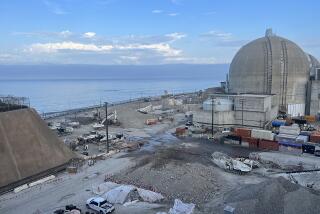Army Will Oppose Relocation of Gas Weapons Due to Be Destroyed
- Share via
WASHINGTON — The Army will recommend destroying obsolete chemical weapons at the eight places where they are stored rather than risk moving them to a central incinerator, a congressman who opposes the plan said Saturday.
The Army will back the on-site incineration plan in a preliminary environmental impact statement to be released Tuesday, said Rep. Larry J. Hopkins (R-Ky.).
The plan is expected to stir opposition in many of the affected areas--in Utah, Alabama, Maryland, Indiana, Kentucky, Oregon, Colorado and Arkansas.
The Army informed Hopkins, whose district includes the Lexington-Blue Grass Army Depot where chemical weapons are stored, of its preference last week, he said in a telephone interview.
“I have not seen it specifically, but they tell me that the tentative recommendation will be for incineration on site,” Hopkins said. No final decision will be made until January, said Hopkins’ administrative assistant, Larry VanHoose.
Preferred Location
Maj. Phil Soucy, speaking for the Army, said that the environmental impact report will cite a preferred location for incineration. He would not say where that would be, but noted that a preliminary Army report of two years ago recommended destroying the weapons without moving them.
He said that the latest recommendation is not final, and that it will be subject to hearings and a lengthy period for public comment.
Congress last year approved the renewed production of chemical weapons, lifting a ban imposed in 1969. It also ordered destruction of the aging stockpile of gas weapons by 1994.
The Army has considered three plans, all of which involve the incineration of the weapons in containers designed to prevent the escape of gases.
Aside from burning them at the sites, the other options were to transport them to a central incineration plant in the Utah desert, or to burn them at two sites, in Utah and in northern Alabama.
More to Read
Sign up for Essential California
The most important California stories and recommendations in your inbox every morning.
You may occasionally receive promotional content from the Los Angeles Times.










